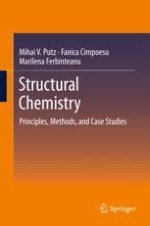2018 | OriginalPaper | Buchkapitel
8. Bonding in Rings and Clusters
verfasst von : Marilena Ferbinteanu, Fanica Cimpoesu, Mihai V. Putz
Erschienen in: Structural Chemistry
Aktivieren Sie unsere intelligente Suche, um passende Fachinhalte oder Patente zu finden.
Wählen Sie Textabschnitte aus um mit Künstlicher Intelligenz passenden Patente zu finden. powered by
Markieren Sie Textabschnitte, um KI-gestützt weitere passende Inhalte zu finden. powered by
